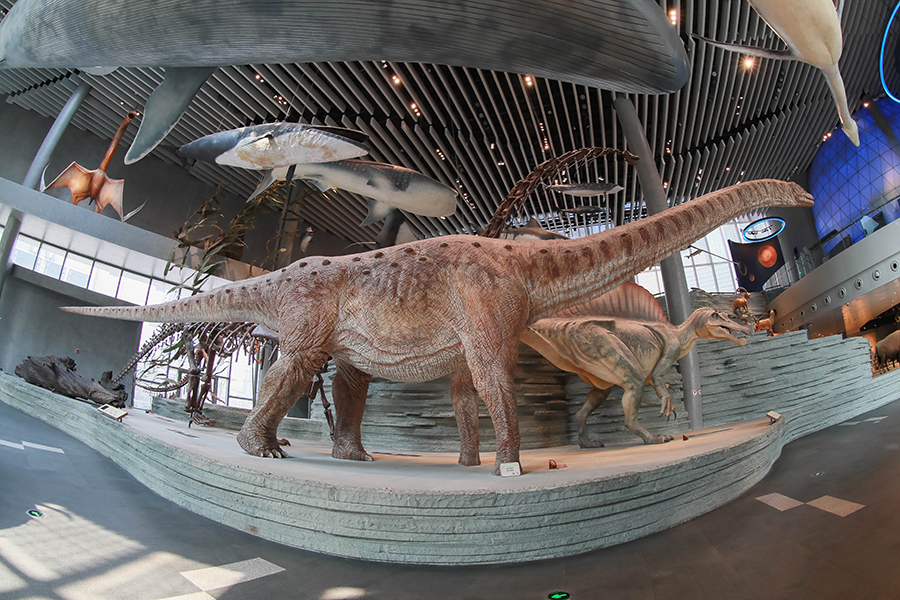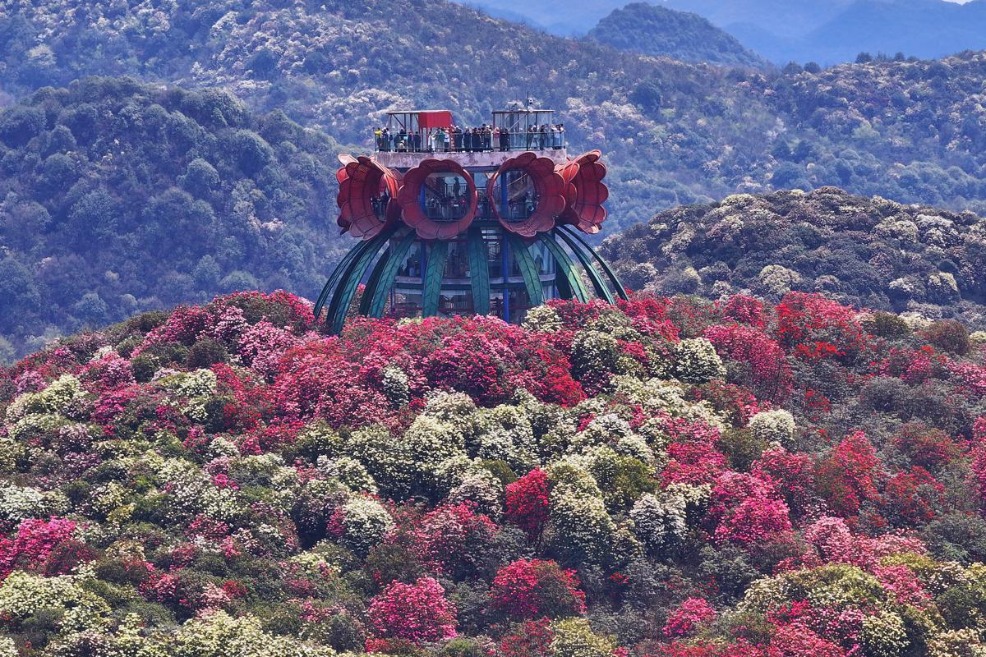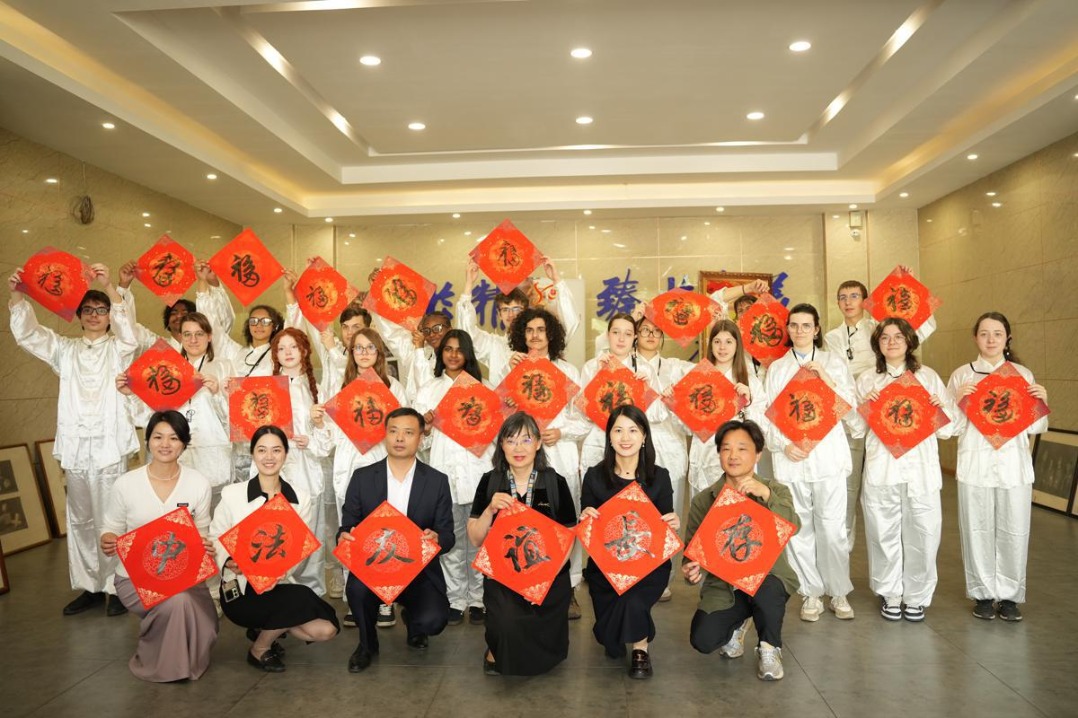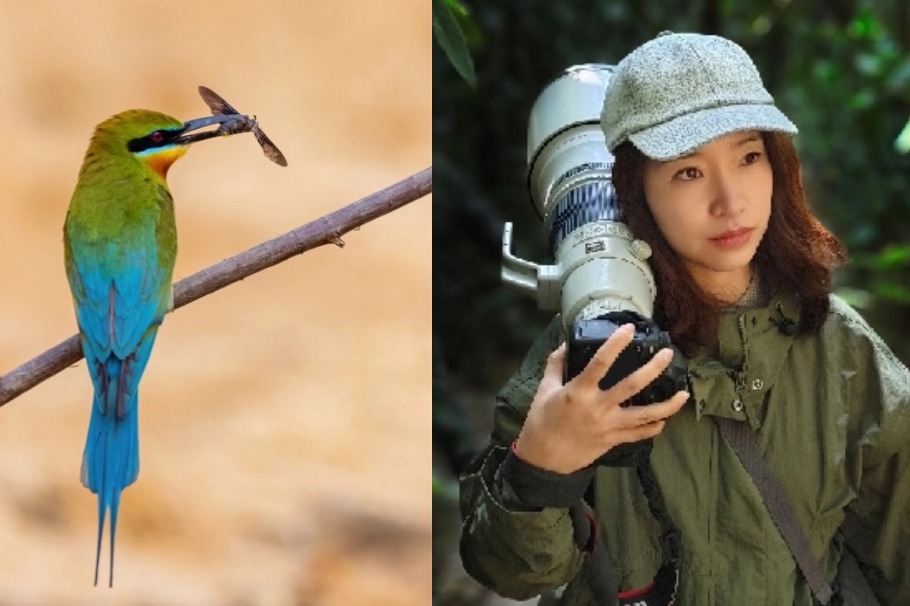Shanghai Natural History Museum unveils ambitious plans


The Shanghai Natural History Museum (SNHM) kicked off a landmark international seminar on Friday in Shanghai celebrating the 10th anniversary of its new venue, highlighting its commitment to innovation and global collaboration.
Ni Minjing, the director of SNHM, a branch of the Shanghai Science and Technology Museum, outlined key future plans, including a collection expansion initiative. Ni pointed out that over the next five years, the specimen holdings in SNHM are set to double in size. "Museum collections are the foundation—with more artifacts, we can create richer exhibitions, activities, and educational programs," Ni said.
Also, the museum aims to host hundreds of one-square-meter mobile museum exhibitions in 2025, taking artifacts to schools, communities, and malls to create "accessible natural classrooms" that break physical barriers and bring natural history into everyday spaces.
Moreover, the China Dinosaur Exhibition will debut on May 18, the International Museum Day, showcasing treasures and research achievements from various institutions nationwide and the museum will keep driving the digitalization plan, enabling online museum experiences for those unable to visit in person.
Over the past decade, the museum has welcomed over 19.42 million visitors and has amassed a collection of more than 310,000 natural history specimens. It has launched 14 educational brands offering over 5,000 high-quality resources across online and offline platforms, reaching 30 million audiences through multimedia channels, and established partnerships with 319 local primary and secondary schools.
The two-day "Heritage Through Ages, Dialogue for Futures" seminar on the future development of natural history museums convened in Shanghai gathering over 140 experts from global museum, science, and education sectors, exploring the mission and innovative pathways for natural history museums in the new era.
International partners lauded Shanghai's initiatives, with Rawin Raviwongse, director of Thailand's National Science Museum, highlighting fruitful Sino-Thai collaborations in joint exhibitions and research. "The Shanghai Natural History Museum's innovative approach to interpretation and education has set new standards in our field. Through your world-class exhibitions and programs, you have made complex scientific concepts accessible to millions of visitors while maintaining rigorous academic standards. This decade of achievement represents far more than the growth of an institution; it stands as a testament to China's enduring commitment to scientific education and cultural enrichment."
Tatsuo Oji, director of Japan's Nagoya City Science Museum, acknowledged China's rich natural diversity and leading paleontological research—having conducted fieldwork in Hubei, Guizhou, and Yunnan—he stressed museums' dual role in "preserving specimens for research and inspiring public curiosity."
He commended the Shanghai museum as a "pioneer in bridging scientific rigor with public engagement", calling for deeper collaboration in paleontology and educational technology.
"China has a very diverse natural environment," Oji said.
"I also believe that a lot of research about natural history is being conducted based on this paleontology, which is my favorite in the study of ancient organisms or fossils and China is conducting a lot of world leading research in this field."
Jason Fair, director of Western Australia Museum, expressed admiration for the Shanghai museum's achievements via video, he emphasized shared goals and looked forward to expanding partnerships in exhibition exchange and ecological research.
Domestic leaders also emphasized the museum's significance in national science education.
Liu Shuguang, chairman of the Chinese Museums Association, traced the century-old journey of Chinese natural museums from their 19th-century origins to modern digital hubs, calling for the establishment of a Chinese theoretical framework for natural history museology to guide future development.
Xue Li, chairman of the Chinese Association of Natural Science Museums, stressed the need for museums to "guard heritage, foster collaboration, rally scientific forces, and build bridges" between global science and cultural heritage, aligning with national priorities for innovation and sustainability.
- Shanghai Natural History Museum unveils ambitious plans
- Former Xinjiang political advisor stands trial for bribery
- Lingshui unveils investment potential at global expo
- Hainan University showcases implantable brain-computer interface technology
- Chinese farmers see income rise as rural industries boost jobs
- China ups investment in water management to over $27b in Q1



































